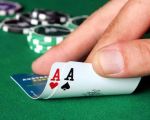- 1-Understanding-Roulette-Odds
- 2-Bankroll-Management-Techniques
- 3-Evaluating-Betting-Systems
- 4-Table-Selection-and-Observation
- 5-Detecting-Wheel-Bias-and-Dealer-Signature
- 6-Psychological-Discipline-and-Tilt-Control
- 7-Case-Study-of-Strategy-Success
- 8-Combining-Strategies-for-Consistent-Wins
1. Understanding Roulette Odds
Before applying any best strategies for winning at roulette in land-based casinos, you must grasp the underlying probabilities. A single-zero roulette wheel offers a house edge of 2.70%, while double-zero wheels increase it to 5.26%. These percentages reflect the expected long-term loss relative to bets placed. Knowing these figures helps you set realistic expectations and choose the wheel that maximizes your chance of success.
1.1 Probability of Outcomes
Each numbered segment has equal probability. On a European wheel, the chance of hitting any one number is 1 in 37. Betting on red or black yields nearly 48.6% success, but the zero skews the odds. Recognizing this slight disadvantage lets you weigh outside bets—calls on dozens and columns—against inside bets on single numbers, which pay 35-to-1 but land only 2.7% of the time.
1.2 Impact of House Edge
Over many spins, the house edge translates into a predictable loss percentage. For instance, wagering $100 per spin on average results in an expected loss of $2.70 per spin on a single-zero table. Aligning your strategy with this knowledge avoids chasing impossible payouts and refocuses you on minimizing volatility.
2. Bankroll Management Techniques
Effective bankroll management is the hallmark of players who endure swings without depleting funds. Establish a dedicated roulette bankroll separate from other finances. Allocate only a small percentage—commonly 1–2%—per session to safeguard against lengthy losing streaks.
2.1 Setting Win and Loss Limits
Define a cap for maximum loss and a target profit before entering the casino. For example, with a $1,000 bankroll, you might quit after losing $200 or after securing a $300 gain. This discipline prevents emotional decisions when you’re ahead or chasing losses when behind.
2.2 Session Duration and Bet Sizing
Long sessions amplify variance. Limit play to 60–90 minutes and adjust bet sizes downward as losses mount. Alternatively, increase stakes modestly when ahead of your session target to lock in profits while the wheel is cold.
3. Evaluating Betting Systems
Various betting systems—Martingale, Fibonacci, D’Alembert—claim to overcome the house edge. While none alter expected value, they influence risk profiles. Understanding each method helps you choose one that aligns with your risk tolerance and table limits.
3.1 Martingale and Anti-Martingale
Martingale doubles bets after losses, aiming to recover all prior losses upon a win. But table limits and finite bankrolls can derail it. An Anti-Martingale (paroli), by contrast, increases bets after wins to capitalize on streaks, capping bet sizes to preserve gains.
3.2 Fibonacci and D’Alembert
The Fibonacci sequence increases bets more conservatively than Martingale, while D’Alembert adjusts by one unit up or down. Both reduce the risk of catastrophic loss but deliver slower recovery, meaning prolonged sessions without large swings.
4. Table Selection and Observation
Choosing the right table and observing play patterns can tip the odds slightly in your favor. Look for wheels with fewer players—each spin cycles faster, reducing your time in play for the same bankroll. Also, examine dealer pace and table conditions.
4.1 Wheel Condition and Maintenance
Well-maintained wheels spin uniformly. Seek out tables where croupiers routinely clean and test equipment. Any wobble or uneven frets can introduce bias, which you might exploit.
4.2 Player Behavior and Wheel Warmth
Notice if a wheel seems “cold” (many consecutive losses on outside bets) or “hot” (frequent hits). While random, human psychology often leads to overbets in nominally warm periods—wait for calm before placing significant wagers.
5. Detecting Wheel Bias and Dealer Signature
Land-based casinos sometimes harbor wheels with subtle physical biases or dealers who release the ball consistently. Tracking results over dozens of spins can reveal patterns to exploit.
5.1 Recording Spin Outcomes
Using a notepad or discreet app, log winning numbers for 50–100 spins per wheel. Look for numbers or sectors hitting significantly beyond expected frequency (over 5% deviation). Betting those sectors in small increments reduces risk while leveraging potential bias.
5.2 Dealer Signature Analysis
Dealers may drop the ball from similar positions, causing the ball to land within a predictable sector. Observing their spin style and mapping outcomes builds a “dealer signature,” which you can target with sector bets.
6. Psychological Discipline and Tilt Control
Even the most robust strategies fail without mental control. Emotional reactions—tilt—lead to reckless bets. Cultivating a calm mindset and taking regular breaks preserves decision quality.
6.1 Recognizing Tilt Triggers
Big losses, distractions, and distractions like noise or alcohol can impair judgment. When you feel frustration rising, step away for five minutes—get fresh air, review session performance, and refocus.
6.2 Mindfulness Techniques
Simple breathing exercises between spins slow heart rate and sharpen focus. Visualizing the wheel’s neutrality—every spin independent—helps combat fallacies that fuel poor choices.
7. Case Study of Strategy Success
Last summer at a major Las Vegas casino, a player documented on CasinoScope combined bankroll limits, dealer signature tracking, and a conservative Martingale variant. Over a four-hour session on a single-zero wheel, he achieved a 12% return on bankroll, exiting when he reached his profit cap. His logbook showed disciplined bet sizing and timely session stops—a textbook example of best strategies for winning at roulette in land-based casinos in action.
7.1 Key Lessons
— Blend multiple strategies to diversify risk.
— Maintain strict session boundaries.
— Use data-driven observations rather than gut feeling alone.
8. Combining Strategies for Consistent Wins
No single tactic guarantees success at roulette. However, integrating odds comprehension, disciplined bankroll management, selective betting systems, attentive table selection, wheel-bias detection, and mental resilience creates a composite edge. By practicing these best strategies for winning at roulette in land-based casinos and recording every session, you refine your approach over time and tilt the balance slightly in your favor.
For gear recommendations—chips, tracking notebooks, and discreet timing devices—visit CasinoScope and equip yourself for strategic play.








